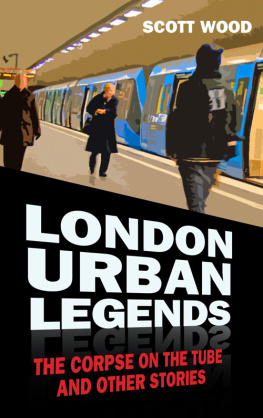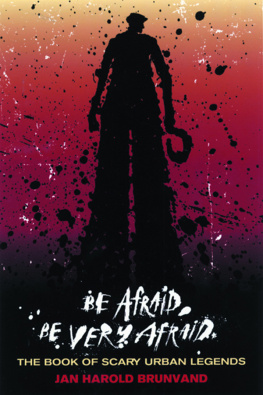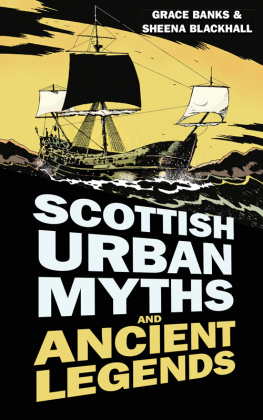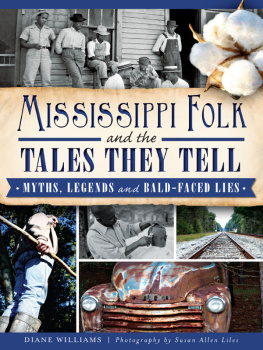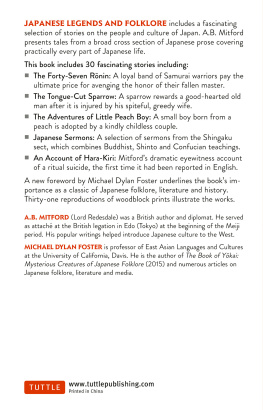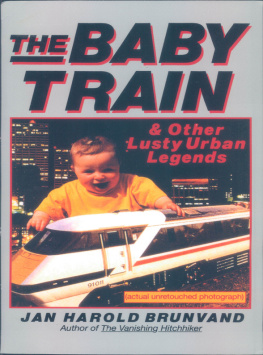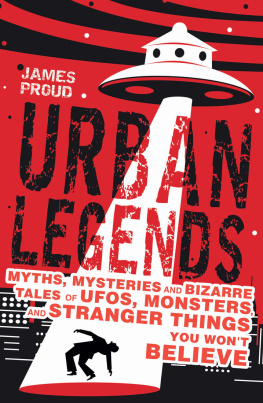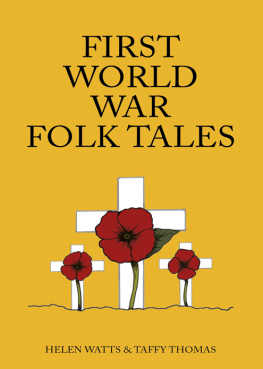
To Clare, Arthur and Alfred Wood: a world of
wondrous stories would mean nothing without you.
I AM IMMEASURABLY GRATEFUL to my wife Clare anyway, but she not only listened to me as I wittered and wibbled on about this book; she also took the children out so I could write, and fearlessly and methodically undertook the arduous first proofread of this book. I am very, very grateful to you, Clare. Also the greatest of thanks to my family and friends, my colleagues at Bishopsgate Institute and The History Press for their patience, support and trust while I took so damn long writing this book.
Thank you to my friends and those who helped with the book for their advice, guidance, research, encouragement, stories and ears to sound-off into: David V. Barrett, Jason Godwin, Simon Round, Neil Denny, Catherine Halliwell, Sarah Sparkes, Ross McFarlane, Paul Cowdell, Neil Transpontine, Vicky Hill, Caroline Oates, John Rimmer, James Clarke, Matt Brown, Lottie Leedham, Jeremy Harte, Joe McNally, Elizabeth Pinel, Alex Margolis, Mark Pilkington, Johnny Radar, Elizabeth James, Martin Goodson, Tom Oldham, Reena Makwanna, Richard Sanderson, Danielle Sutcliffe, Steven Barrett and those of you I have doubtless forgotten. Thank you, I could not have done it without you.
There is a bibliography at the back of this book, but writing and researching Londons urban legends would have been far harder and a lot less fun without the writings of Rodney Dale, Jan Harold Brunvand, Michael Goss, James Hayward, Steve Roud, Antony Clayton and Barbara and David Mikkelson, as well as the editors, writers and contributors of the Fortean Times , Magonia magazine and the Folklore Society Newsletter. Thank you, thank you, thank you!
I owe a debt of gratitude to the London Metropolitan Archive, Royal Society of Architects Archive, the British Library and British Newspaper Library, Bishopsgate Institute Library and Archive, Guildhall Library and Transport for Londons Corporate Archives, as well as Clare Norman at Lidl public relations, Tom Artrocker, Jo Tanner at Us Ltd and the Museum of London archaeology department for their patience.
Thank you to the London Fortean Society, the London Cryptozoology Club and the South East London Folklore Society who have let me indulge my obsession for these topics in public.
CONTENTS
one |
two |
three |
four |
five |
six |
seven |
eight |
nine |
ten |
eleven |
twelve |
thirteen |
fourteen |
fifteen |
sixteen |
seventeen |
eighteen |
nineteen |
twenty |
twenty-one |
twenty-two |
Ghost and other horror stories, political and social commentaries, dirty jokes (hundreds of them!), black humours tales, episodes of revenge, and topical pieces which rely on the audiences shared reaction to AIDS, nuclear warfare, foreigners, etc.

Michael Goss answers his question What are urban legends about? in the article Legends for Our Time in the July 1987 issue of The Unknown .
T HIS IS A book about urban legends and London. The brief for the book is a brilliant one: collect, share and attempt to interpret the funny, scary, filthy and bizarre contemporary legends weaving their way through everyday London life. I hope to have written a book that is about London and urban legends, as well as how they relate to each other. This is a book of London tales that finds strange stories and lost and bizarre truths amongst the folklore. This is a book that looks at urban legends using the capital city of the United Kingdom as a frame whilst not neglecting their ability to travel anywhere there are people, and their talent for adapting very quickly to their environment. It is true that urban legends are universal rather than local, but one way urban legends thrive is by their immediacy: they attach themselves to people and places. It is also true that the temperament of tale-tellers, their audience and the landscape they share shapes their legendary life. Some of the stories in this book are as synonymous with London as mash and liquor with your pie, as people who talk all the way through gigs and having to queue for the swings in the playground. If you are not familiar with the city, this book is a strange introduction, but it can still show you around. You would be just as likely to find yourself standing over a possible plague pit or under a forgotten church gargoyle as in the middle of Trafalgar Square or outside Buckingham Palace. Ideas about London are far more widely spread than ones on urban legends, so I shall spend a few more pages introducing those. But fear not, the city runs through this entire book.
Urban myths are thought of as untrue stories pretending to be true, which they partly are, but I have recently heard many a fallacy or falsehood being denounced as being merely an urban myth. This is not true: there is always some level of narrative within an urban myth or legend. I may have stretched the meaning myself here to include moral panics, delusions and hoaxes, but each of these carries a story within them or are delivered by a fear or belief with a narrative. Urban myths are the stories told by ordinary people to entertain and to communicate a truth, opinion or prejudice through a story. Just as fairy tales explain the dangers of going into the woods at night, tell stories of kings or princesses going to a market in disguise, or why a local rock looks a certain shape, an urban myth will explain the dangers of using the London underground at night, tells a story of a celebrity or princess going to a local pub or bar, or describes why a building or statue is a certain shape. Other urban legends are a mad idea that rocket through the public consciousness, a story just plausible enough to spread: rioters releasing animals from London Zoo; a green patch of land in an overcrowded city lying empty because it hides a deadly secret. Others are even more vague, like the idea that big cats (pumas and panthers) have escaped their rich owners or zoos, and prowl the edges of the city; that urban fox hunts are something that may be useful and real.
There is a mystery to these myths. I have not set out to solve these mysteries, but to offer (hopefully) informed suggestions as to how and why they came to be.

Origin of Myths

In keeping with something as nebulous as urban myths, the origins of the phrase, along with the term urban legend, are not straightforward. Many believe that the American professor and writer Jan Harold Brunvald coined the phrase urban legend, and his books certainly helped popularise the phrase, but the credit could also go to American folklorist, Richard Dorson, who apparently used it in a 1968 essay Legends and Tall Tales (in Our Living Traditions , edited by Tristram P. Coffin). Dorson is the earliest citation in the Oxford English Dictionary , but this does not make him the man who minted the phrase. Dorson used it himself in a 1962 article. Researching the origin in Foaftale News , Charles Clay Doyle and Lara Renee Knight found a New York Times article from 6 December 1925 regarding Europes population growth: Around the subject of population there has been a growth of popular legend hard to remove. Great Britain illustrates the urban legend. This described a myth of urban life: that it is unhealthy and squalid compared to rural living and is not used to describe contemporary legends and myths. The phrase is old, has multiple uses and its roots are hard to uncover.
Next page
